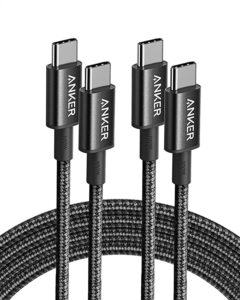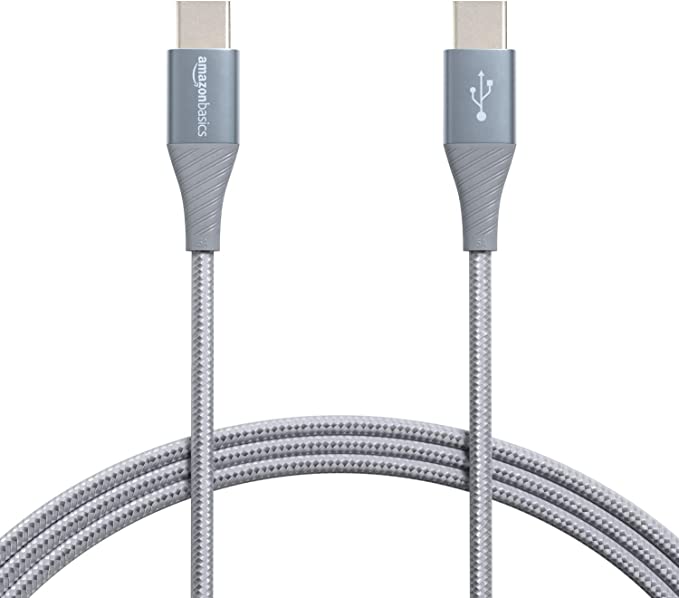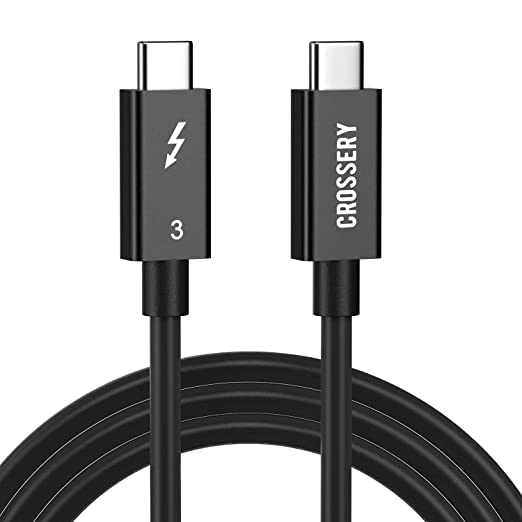In today’s fast-paced digital world, connectivity is key. From transferring data to charging devices, we rely heavily on versatile ports to meet our daily technological needs. Thunderbolt and USB-C are two prominent connectivity standards that have gained widespread popularity. Although they may seem similar at first glance, it’s important to understand their unique characteristics and applications. In this blog post, we will delve into the intricacies of Thunderbolt vs USB-C, exploring their differences and shedding light on their respective strengths and purposes.
Understanding Thunderbolt
Thunderbolt is a high-speed input/output (I/O) technology initially developed by Intel in collaboration with Apple. It is renowned for its exceptional performance and versatility. Thunderbolt ports come in two generations: Thunderbolt 3 and Thunderbolt 4. Thunderbolt 3, introduced in 2015, utilizes the USB-C form factor and has become widely adopted.
Unleashing the Power of Thunderbolt:
Thunderbolt offers unparalleled data transfer speeds and multiple functionalities. With Thunderbolt 3, users can achieve data transfer rates of up to 40 gigabits per second (Gbps), allowing for lightning-fast file transfers and backups. Additionally, Thunderbolt supports dual 4K display connectivity or a single 5K display, making it ideal for creative professionals and gamers seeking exceptional visual experiences. Moreover, Thunderbolt provides the ability to daisy-chain multiple devices, enabling a streamlined setup with a minimal number of cables.
Demystifying USB-C:
USB-C, on the other hand, is a physical connector standard designed to facilitate faster data transfer and power delivery. Unlike Thunderbolt, USB-C is a port standard and does not define the underlying technology or data transfer speeds. USB-C ports are compact, symmetrical, and reversible, allowing for easy plug orientation. This versatility has made USB-C ports increasingly prevalent across a wide range of devices.
Embracing the Flexibility of USB-C:
SB-C ports support various protocols, including USB 3.1, USB 3.2, and even Thunderbolt 3. This means that devices equipped with USB-C ports can enjoy fast data transfer speeds of up to 10 Gbps (USB 3.1 Gen 2) or 20 Gbps (USB 3.2 Gen 2×2). USB-C also supports power delivery, enabling users to charge their laptops, smartphones, and other compatible devices using a single cable. This feature has greatly simplified the charging process and enhanced portability.
Differentiating Thunderbolt and USB-C:
While Thunderbolt and USB-C share the same physical connector, Thunderbolt has higher data transfer rates and additional capabilities, such as daisy-chaining and support for multiple high-resolution displays. Thunderbolt 3 also supports up to 100 watts of power delivery, allowing for charging of laptops and other power-hungry devices. USB-C, on the other hand, is a more universal port that supports various protocols and is widely adopted across devices from different manufacturers.
Selecting the Right Port:
Choosing between Thunderbolt and USB-C ultimately depends on your specific needs. If you require the fastest data transfer speeds, compatibility with high-resolution displays, and advanced capabilities, Thunderbolt is the way to go. Thunderbolt is particularly suited for professionals in creative industries, such as video editors and graphic designers. However, if you prioritize versatility, a universal port, and compatibility with a wide range of devices, USB-C is the better option. USB-C is suitable for everyday users seeking a convenient and multi-purpose connection standard.
Summary Thunderbolt vs USB-C
In the realm of modern connectivity, Thunderbolt and USB-C stand out as two remarkable technologies. While Thunderbolt excels in terms of speed and advanced features, USB-C offers versatility and compatibility. Thunderbolt, with its blazing-fast data transfer speeds, support for multiple high-resolution displays, and daisy-chaining capabilities, is ideal for power users and professionals in need of exceptional performance. On the other hand, USB-C’s universal nature, support for various protocols, and power delivery capabilities make it a convenient choice for everyday users and those seeking a single port for multiple devices.
It’s worth noting that Thunderbolt 4, the latest iteration, offers a few enhancements over Thunderbolt 3. It provides universal cables up to 2 meters in length, introduces PCIe tunneling for data and display traffic on a single cable, and enables Wake-on-External Power Button functionality, allowing users to turn on a connected Thunderbolt device while the host device is in sleep mode.
Ultimately, the choice between Thunderbolt and USB-C depends on your specific requirements and devices. Consider the tasks you perform, the devices you use, and the level of performance you desire. It’s also important to check the specifications and capabilities of your devices to ensure compatibility with the chosen port.
As technology continues to evolve, we can expect further advancements in Thunderbolt and USB-C, with faster speeds, increased capabilities, and wider adoption. These connectivity standards play a vital role in shaping the future of our digital world, providing us with seamless and efficient ways to connect and interact with our devices.
So, whether you opt for Thunderbolt’s lightning-fast speeds or USB-C’s versatility, both options have their place in the ever-expanding landscape of connectivity. Embrace the power of Thunderbolt when you need maximum performance, and appreciate the convenience and compatibility of USB-C for everyday tasks. The choice is yours to make, based on your unique needs and preferences.









